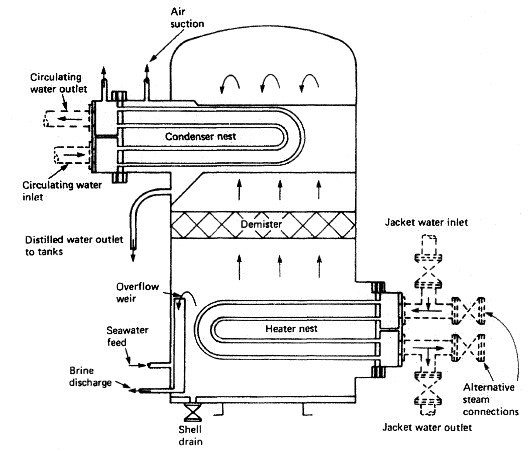
Marine Distillation System & Evaporation Process
Distillation is the production of pure water from sea water by
evaporation and re-condensing. Distilled water is produced as a result of
evaporating sea water either by a boiling or a flash process. This
evaporation enables the reduction of the 32000 parts per million of
dissolved solids in sea water down to the one or two present in distilled
water. The machine used is called an 'evaporator', although the word
'distiller' is also used.


